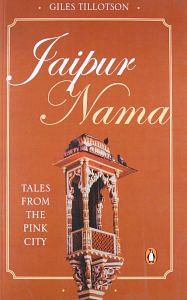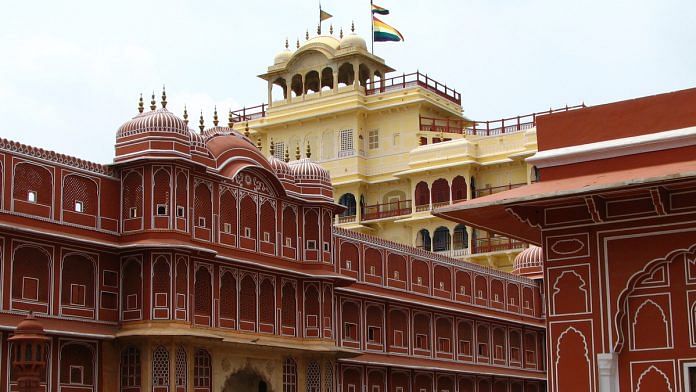By 1719 it was clear to all at court that the Mughal empire was no longer led by the vision of an emperor, as it had been from the time of Akbar to that of Aurangzeb; it was a machine, which merely required the figure of an emperor as one of its cogs in order to function. It mattered less and less who the figure was. As it happened, the last man to sit on the throne in 1719 was styled Muhammad Shah Rangeela and his main achievement was to stay on it—by not doing very much and by rarely venturing out of Delhi—for the next thirty years.
Jai Singh, like other Rajput rulers, continued to contribute to the machine. He served as governor of Malwa, in central India, under Farrukh Siyar, and he enjoyed good personal relations with Muhammad Shah. But he could plainly see a power vacuum developing in northern India, and his decision in 1727 to build a new capital city was part of a plan to assert himself and his kingdom as an alternative power base to rival the Mughals. The earlier stages of this plan had included the reorganization of his state bureaucracy along more efficient lines and, on the personal front, the successful application of ‘Sawai’—Aurangzeb’s complimentary epithet for him—as part of his official title, to mark him out amongst his peers. (The term was subsequently adopted by all his successors.)
The new capital city—named Jaipur, after its founder—was to be a much more visible sign of the state’s power and progress, and indeed it was to contribute to a significant change in its character. Previously, Rajput capitals were typically established amongst hills, or on the top of one. Most famous and prestigious was the stronghold of the Sisodia clan at Chitor, which covers the plateau of a natural fortress, an outcrop of rock that is three miles long and half a mile wide, that rises 500 feet above the plain and has no close neighbouring hills from which it could be attacked. These natural defences were augmented by artifice, as the steep sides of the hill were escarped and enclosed by a curtain wall. When in spite of all this, Chitor fell to the Mughals in 1567, the Sisodias established their new capital at Udaipur, a site ringed by protective hills. Their eastern neighbours, the Hadaoti clan, had found a similar site at Bundi. Even out to the west and north, amidst the dunes of the Thar Desert, there were outcrops of rock that were magnets for Rajput city builders—as at Jaisalmer for the Bhatti clan, and Jodhpur for the Rathores. Amber itself similarly draws protection from the terrain: it would be hard enough to ride a horse through its passes, never mind lead an army. But Jaipur was to break this mould. Certainly, it would be equipped with a defensive city wall and would lie within easy reach of the fortified hills of Amber; but it was to stand proudly on a plain, exposed towards the south, with its main gates giving onto an imperial highway, to open it to traffic and to trade.
For Jaipur was conceived not as the military retreat of feudal warlords, like Amber, but as a commercial city, a business centre of thriving enterprise. The strength of the reformed state was to depend less on arms than on money. It was to famous bankers and merchants therefore, not to distinguished warriors, that Sawai Jai Singh now wrote personal letters, inviting them to settle in his new city, inducing them with tax concessions and gifts of land on which to build elegant courtyard houses, called havelis, for the accommodation of their families. He sent invitations especially to Jain traders whose traditions led them—and lead them still—into industries that combine minimum violence with maximum profit, such as gem trading. Garnets, as it happens, are the only gem that can be mined locally, but a centre of distribution does not have to be near the source, and Jaipur soon became (and remains) one of the leading centres in Asia for the cutting and sale of precious and semi-precious stones, including lapis lazuli from Afghanistan, diamonds and pearls from the Deccan and rubies from South-east Asia.
Also read: Why India’s prime ministers give their Independence day speech from Delhi’s Red Fort
 Excerpted with permission of Penguin Random House India from Jaipur Nama: Tales from the Pink City by Giles Tillotson.
Excerpted with permission of Penguin Random House India from Jaipur Nama: Tales from the Pink City by Giles Tillotson.




This is a fake story, promoting conversion, you should remove this content.
This is fake one. In my thirty years of yatra to Sabarima, never heard this. Do not spread this type of things.
This seems to be one more attempt to convert Hindus! Can Christians be broadminded to visit and worship temples or admire Temple architecture much older and richer to advent of Church? Never!Their brain is unidimensional and can never appreciate richness of Hindu thought !